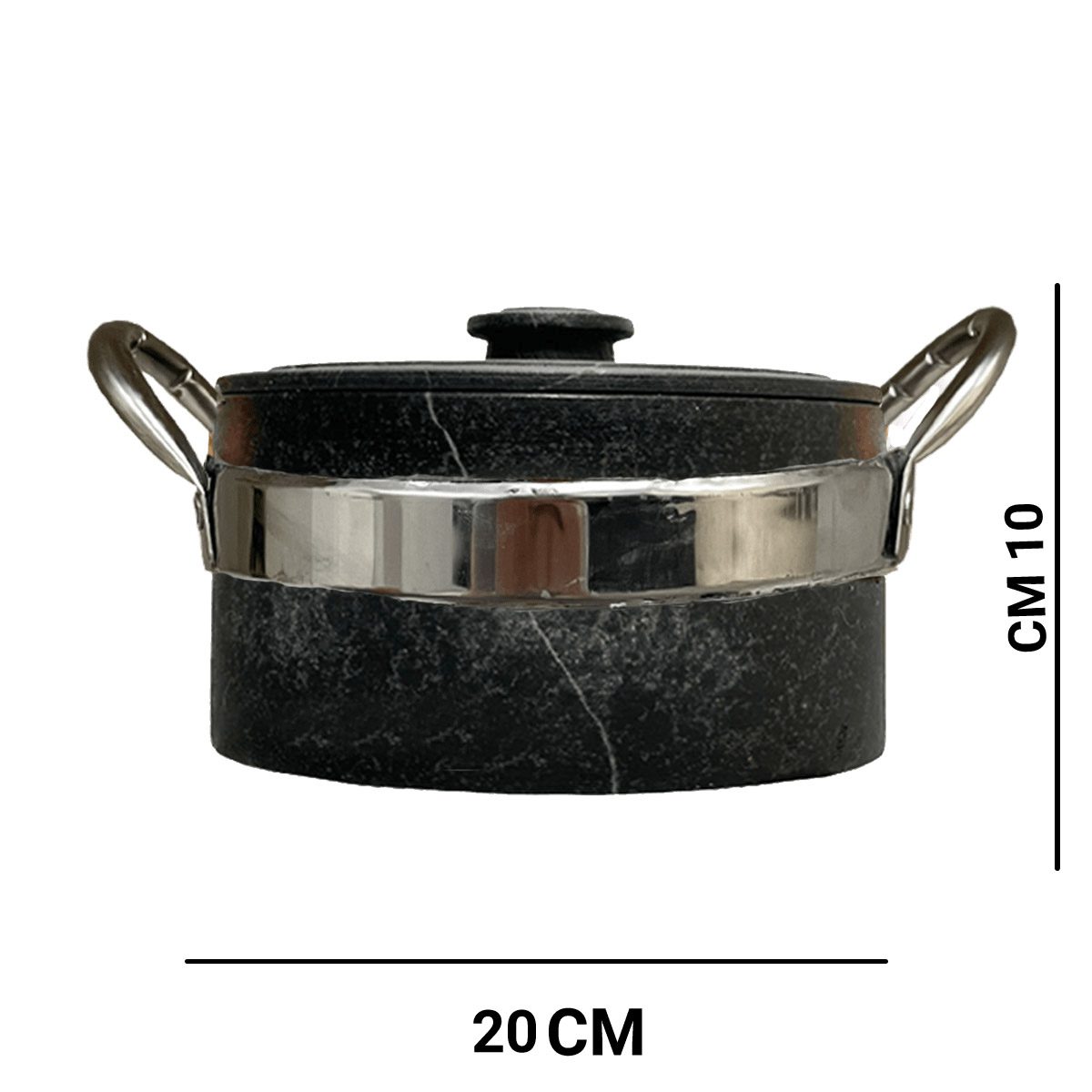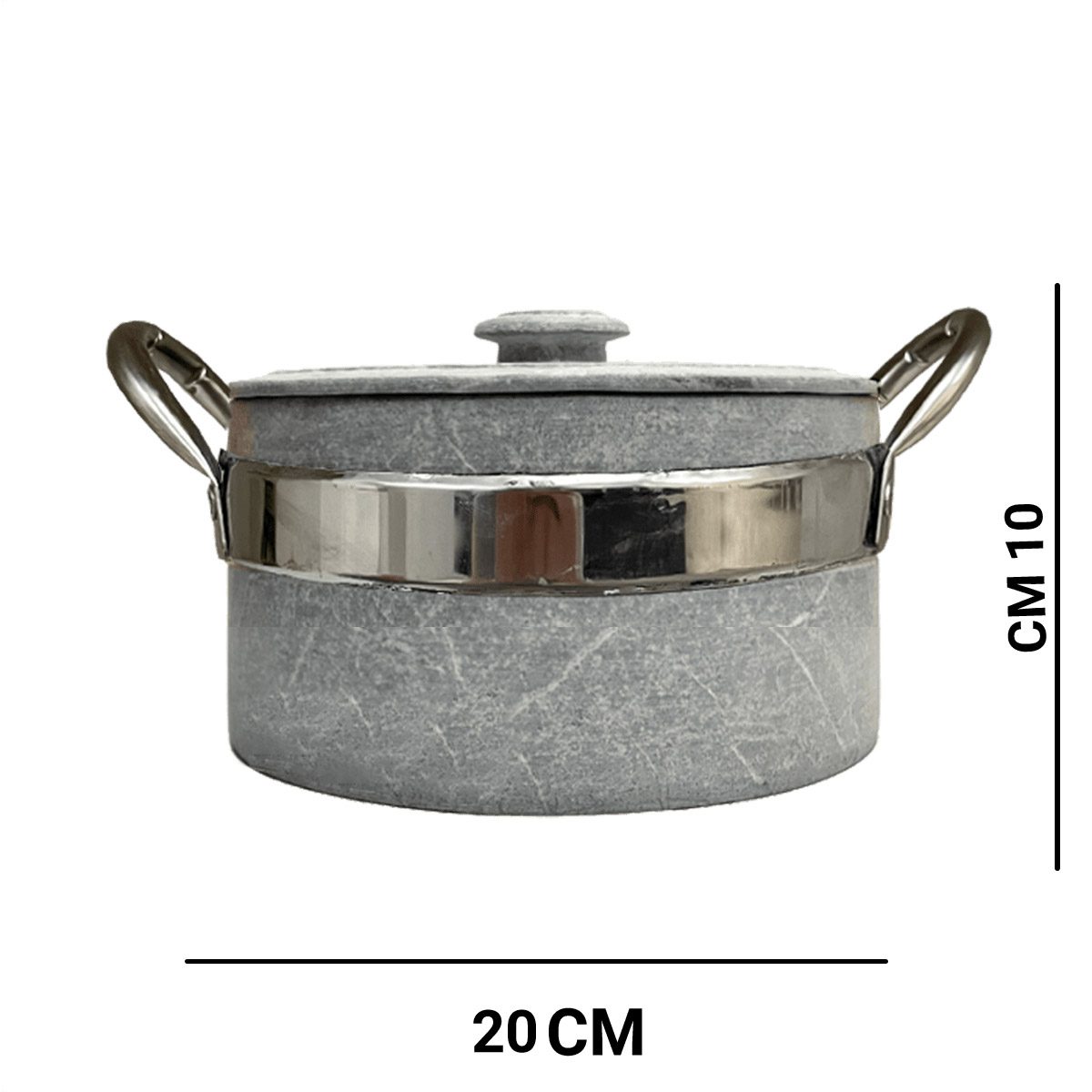What Material Are Stone Cooking Pots Made Of?
Stone cooking pots have been used by humans for thousands of years and are considered one of the healthiest and most natural cookware options available today. These pots are made from a metamorphic rock called Talc Schist, commonly known as Soapstone. Soapstone is highly valued for its softness, malleability, and heat retention, making it perfect for crafting durable, food-safe cooking vessels.
Historical Significance and Origins
Soapstone deposits are rare, and one of the most famous sources is the holy city of Mashhad, Iran, specifically the Hezar Masjed Mountains. Stone cookware has been utilized in this area for millennia. In 1974, a joint expedition by Iranian and French archaeologists uncovered 60 stone tools near Mashhad, dating back 800,000 to 1 million years, representing the earliest evidence of tool-making humans in Iran and Southwest Asia.
Historical texts also record that Imam Reza (peace be upon him), the eighth Shia Imam, visited this region around 1,200 years ago. He blessed the mountains near Sanabad, where stone pots were produced, and instructed that only these vessels should be used for preparing his food (Kitab Uyoon Akhbar al-Ridha, Sheikh Saduq, Vol. 1, p. 147).
Royal Stone Cooking Pot (Dizi Stone Pot)
The Royal Stone Cooking Pot, also known as the Dizi Stone Pot or Stone Casserole, is crafted from a single piece of soapstone and includes a steel handle for durability and safety.
Key Features:
- Made from a single piece with no cracks or defects
- Sourced from soapstone in the Hezar Masjed Mountains, Mashhad
- Ideal for stews, soups, ash, and other liquid-based dishes
- Suitable for 4–5 people
- Rich in iron, silica, and essential minerals
- CNC-machined for precision, durability, and elegance
- Safe for use on stoves and in ovens
- Shipped unseasoned; can be oiled before first use
Benefits of Stone Cooking Pots:
- Energy Efficiency: Soapstone absorbs and distributes heat gradually, minimizing energy use, reducing evaporation, and preserving nutrients.
- Enhanced Flavor: Foods cooked in stone pots taste richer and more flavorful. Smooth surfaces prevent sticking and ensure easy cleaning.
- Faster Cooking: Works similarly to a pressure cooker without risks. Meats and stews cook evenly in around 2 hours over moderate heat.
- Easy Cleaning: High-density stone resists bacteria. Minimal detergent is needed; natural cleaning with water, vinegar, or mild soap is sufficient.
- Health Benefits:
- High iron content helps prevent anemia
- Silica strengthens nails and joints
- Contains minerals that enhance overall food nutrition
How to Prepare and Use a Stone Cooking Pot:
- Coat the interior and exterior with lard or olive oil.
- Place in a warm area for three days to fully absorb the oil.
- Wash thoroughly before first use.
Usage Tips:
- Do not fry or sauté; use only for stews, soups, and liquid dishes.
- Cook over moderate heat; add boiling water if necessary.
- Use a heat diffuser instead of placing directly on an open flame.
- Handle carefully to avoid cracks or breaks.
- Avoid sudden temperature changes.
Repairing Cracks:
Method 1: Fill the pot with water, add 1 tbsp turmeric, 1 tbsp starch, 1 tbsp tomato paste, and 250g lard. Simmer gently for 10 minutes, allow to cool, then wash.
Method 2: Mix egg white with lime to form a soft paste. Apply to the interior and exterior cracks, let dry, wash, and reuse.
Stone cooking pots combine ancient tradition, natural materials, and modern craftsmanship, providing a safe, flavorful, and nutrient-rich cooking experience for every kitchen.






Reviews
Clear filtersThere are no reviews yet.